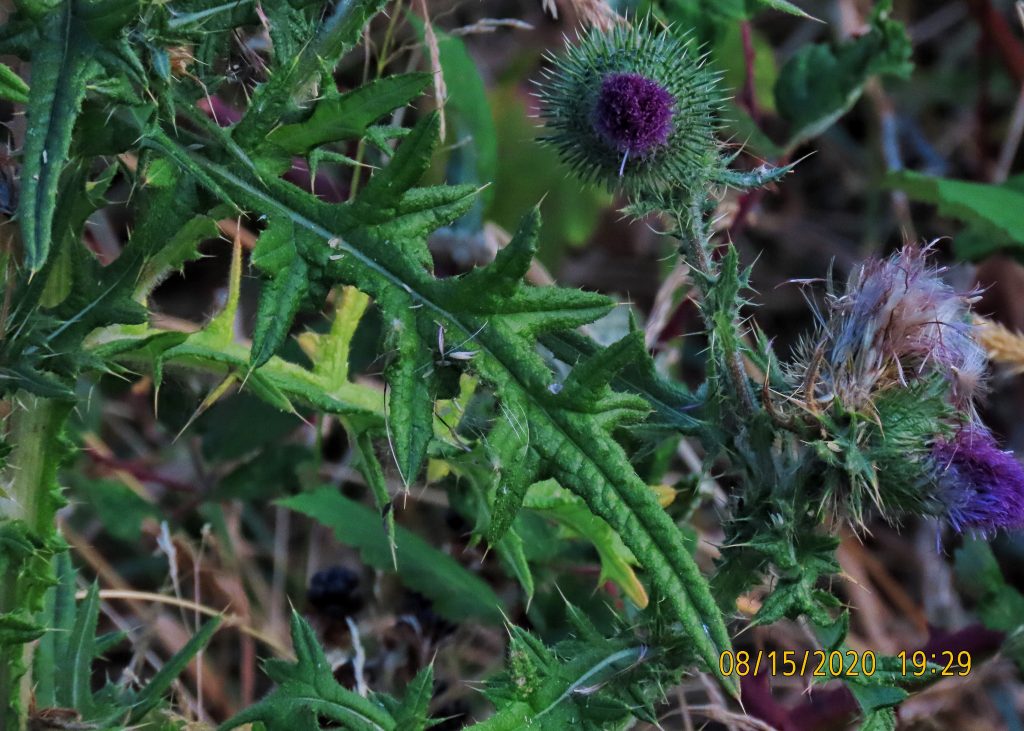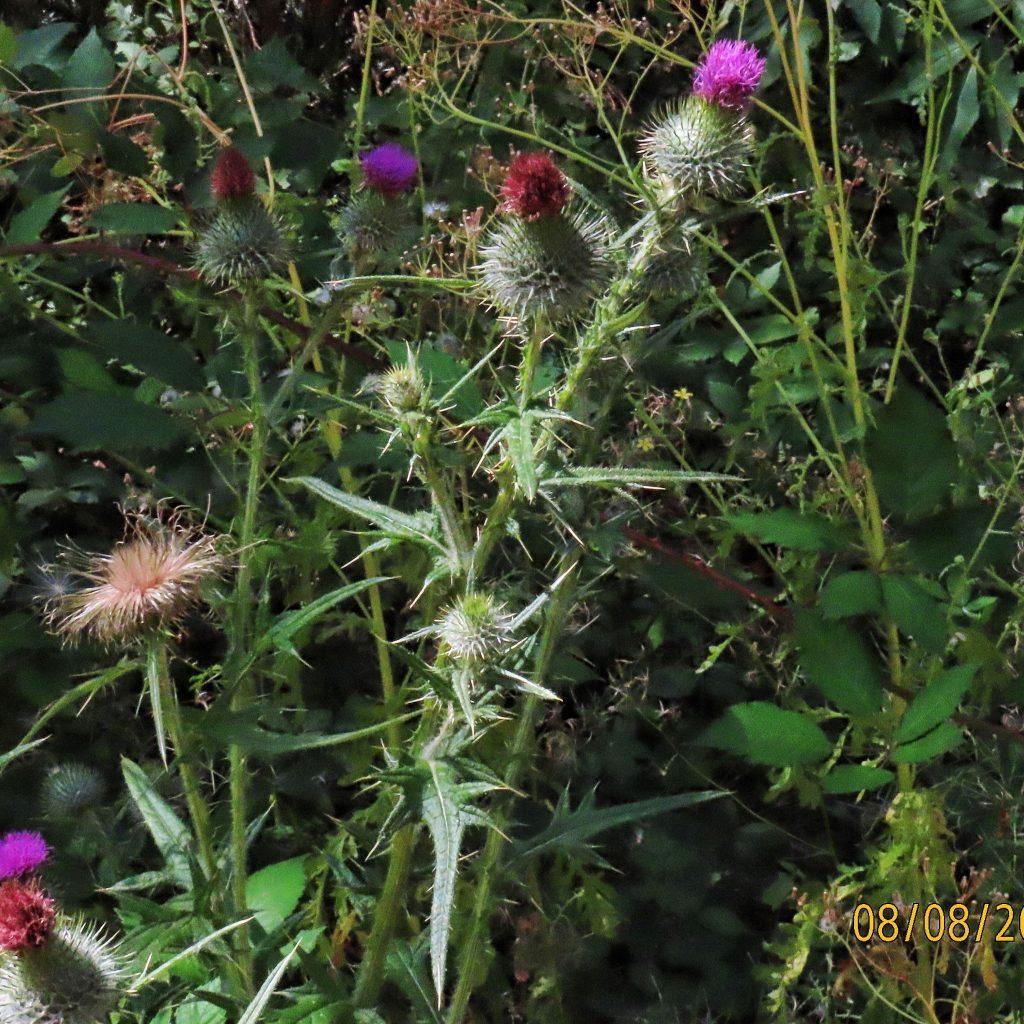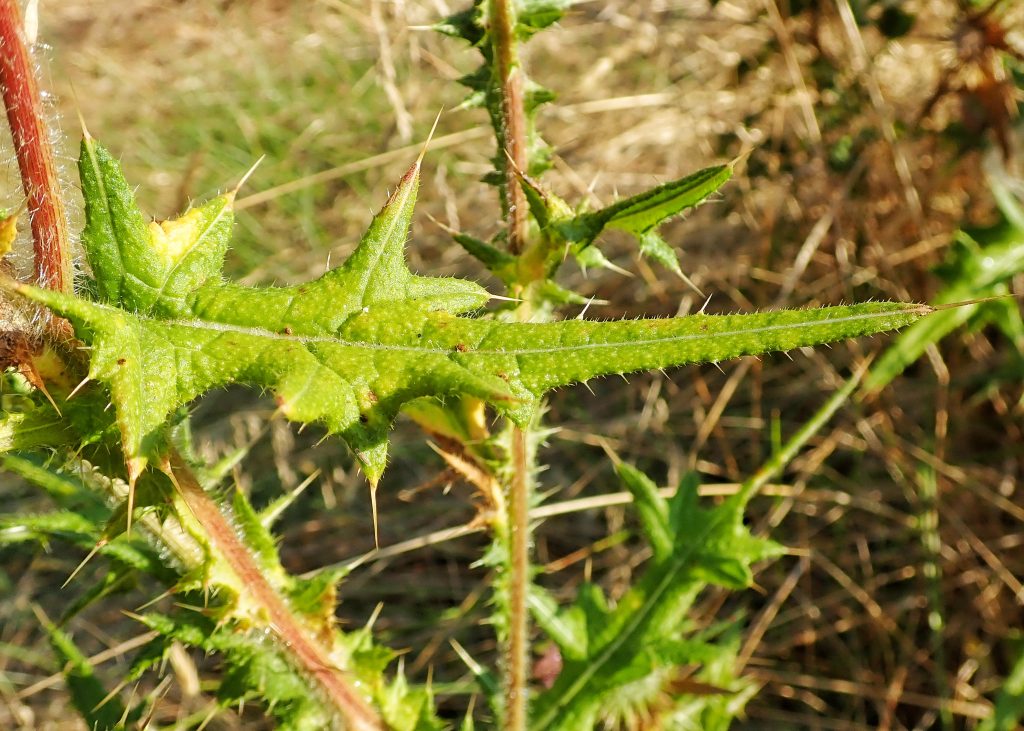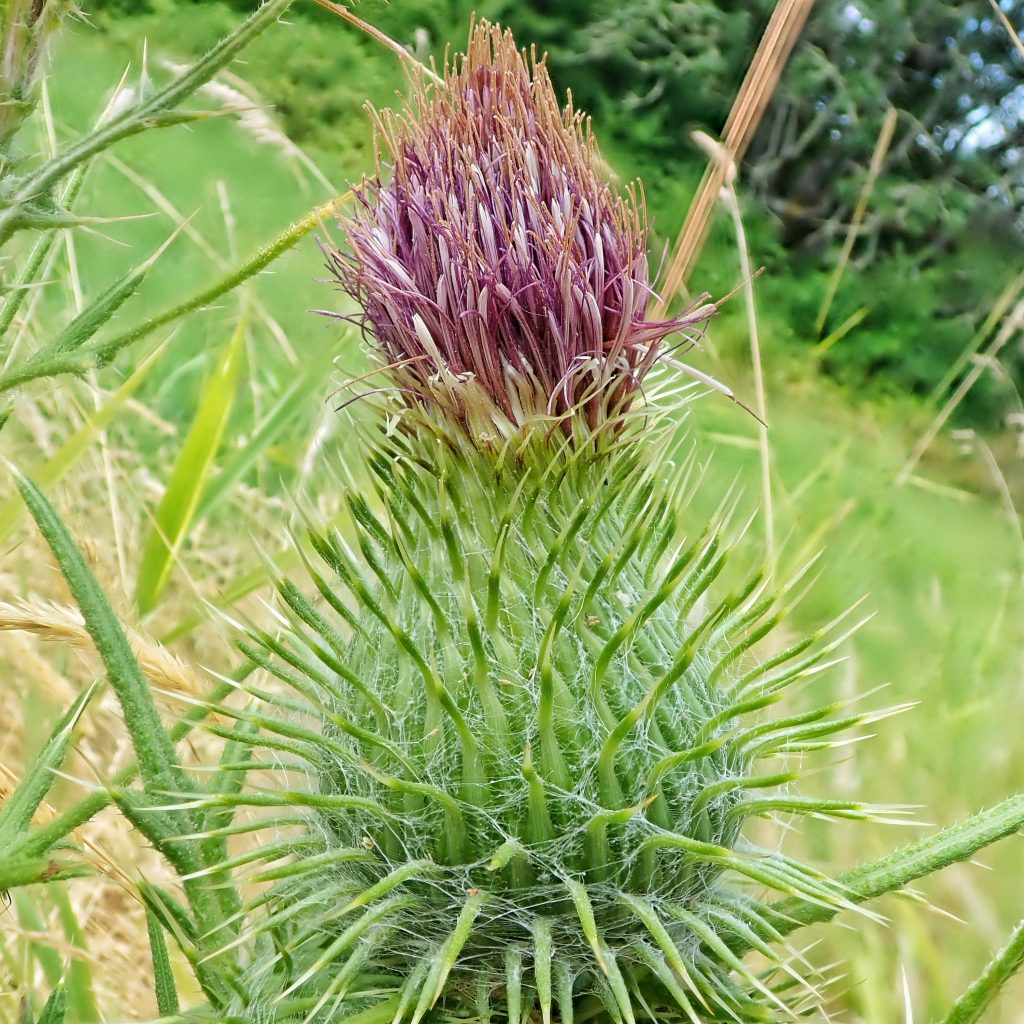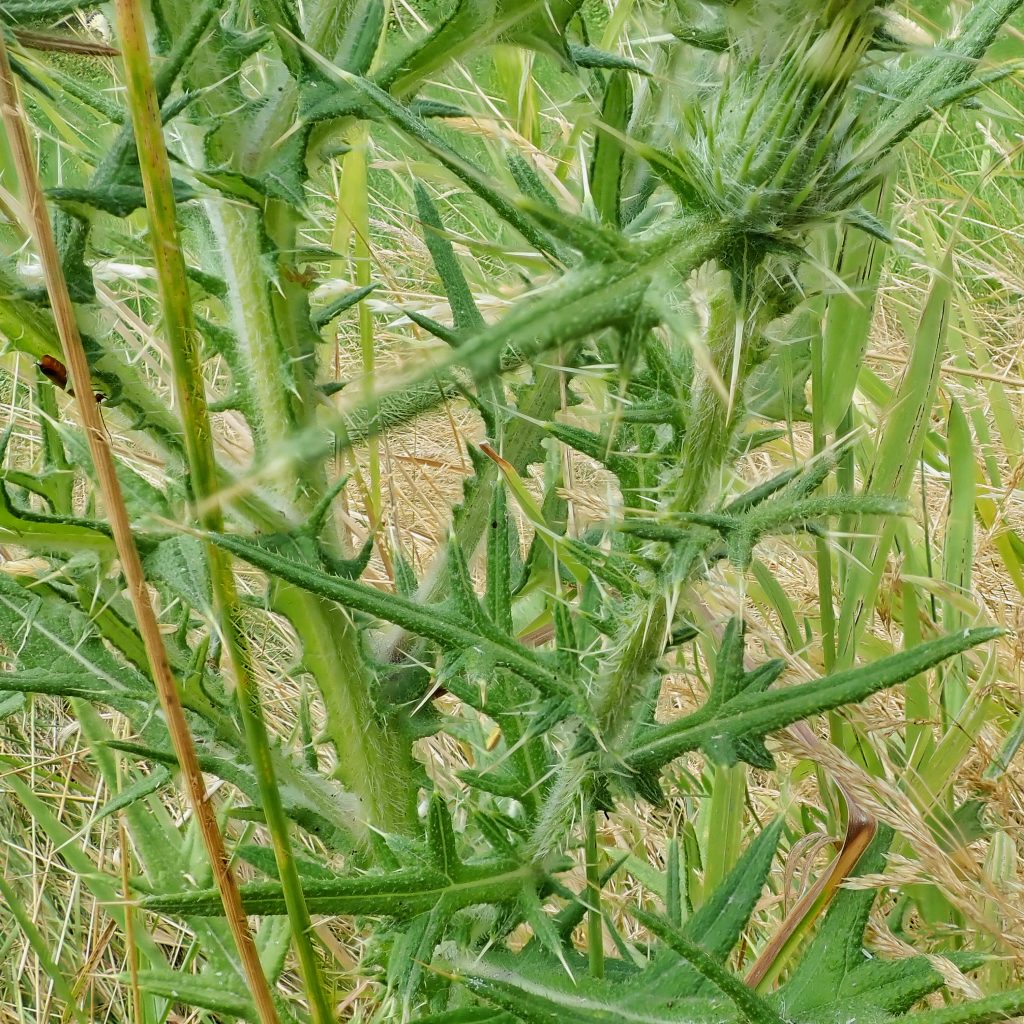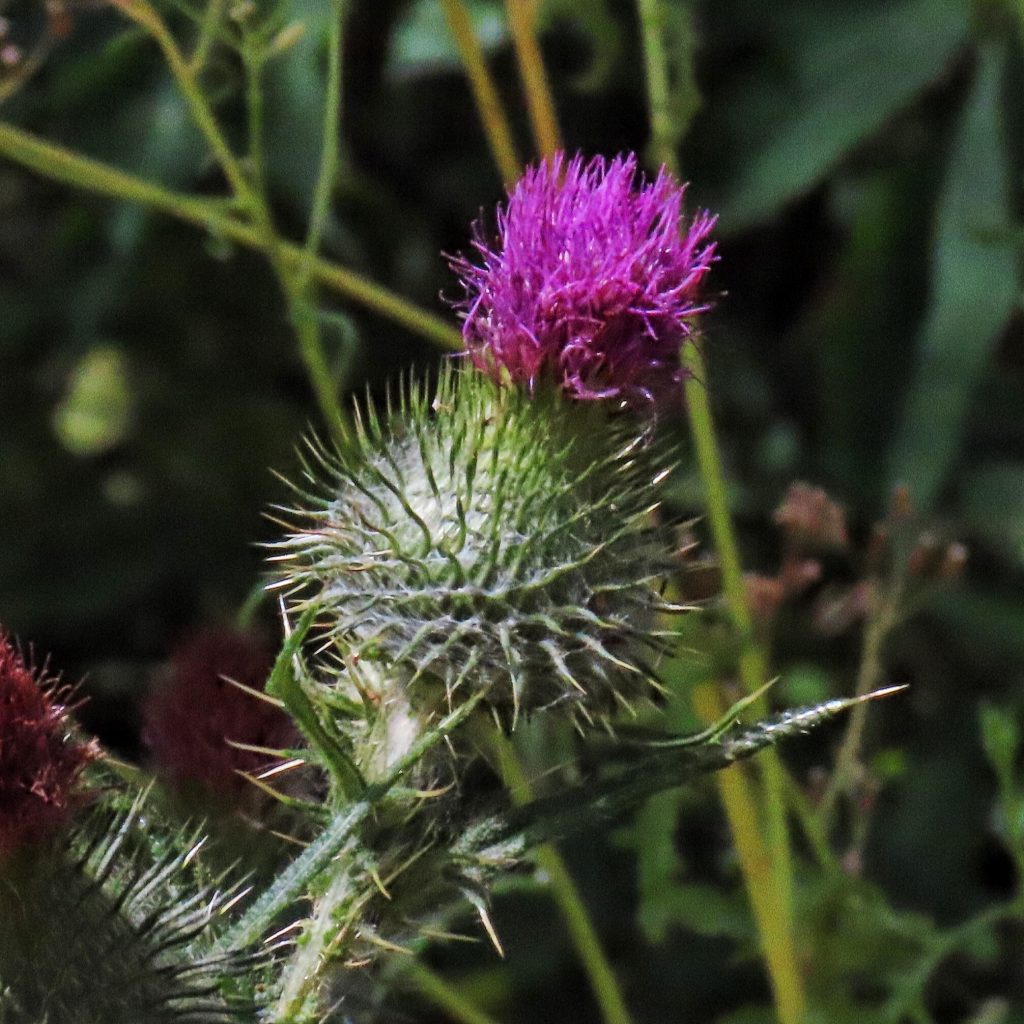
These plants are 1.5-5’ tall, with prickly stems, and sessile, clasping, narrow lobed leaves ending in a spine. Flower heads are pear shaped, 1.5-2” wide, heavily spined, with many blue to purple ray florets about an inch long, which fan out like an umbrella and develop pappus at the end as the seeds become mature. Canada Thistle has fairly smooth stems, a smaller, more cylindrical flower head and more globular flower, with smooth or softly haired leaves. Scotch Thistle has triangular lobes on its leaves, and a spiny, rather than merely prickly, stem.
Though they are non-native and invasive they produce a large amount of nectar which is utilized by a wide variety of insects, and it is a larval host for Painted Lady and American Lady butterflies. American Goldfinches not only eat the seeds but they use the downy pappus for lining their nests. Bull Thistle is biennial, producing a basal rosette of leaves the first year, and sending up a flowering stalk during the second. It has been found in virtually every county in our region.
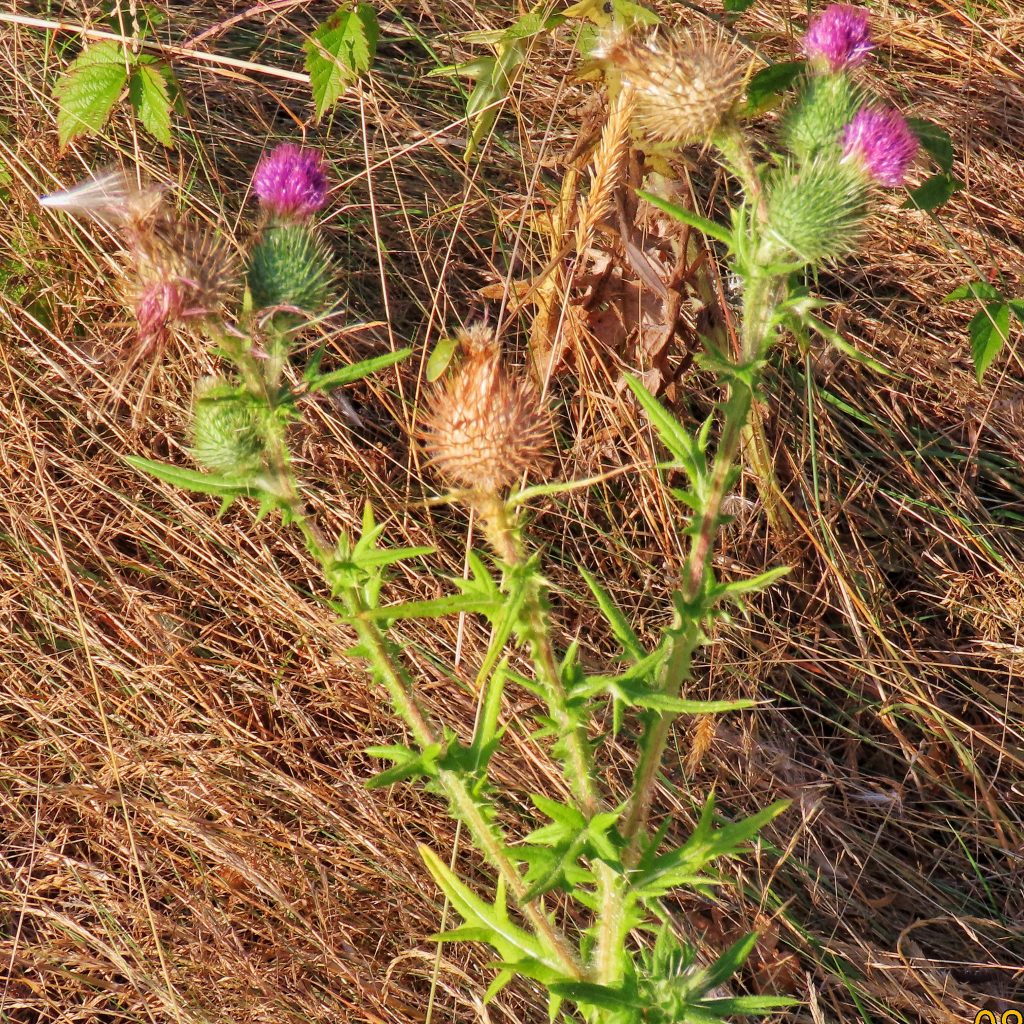
https://en.m.wikipedia.org/wiki/Cirsium_vulgare
Washington State Noxious Weed Control Board
https://www.invasive.org/weedcd/pdfs/wow/bull-thistle.pdf
https://www.illinoiswildflowers.info/weeds/plants/bull_thistle.htm
Size- Up to 6’
Habitat- Primarily disturbed ground and overgrazed pastures, but seeds will germinate anywhere they can reach soil.
Range- Region wide
Blooms- Late spring to early fall
